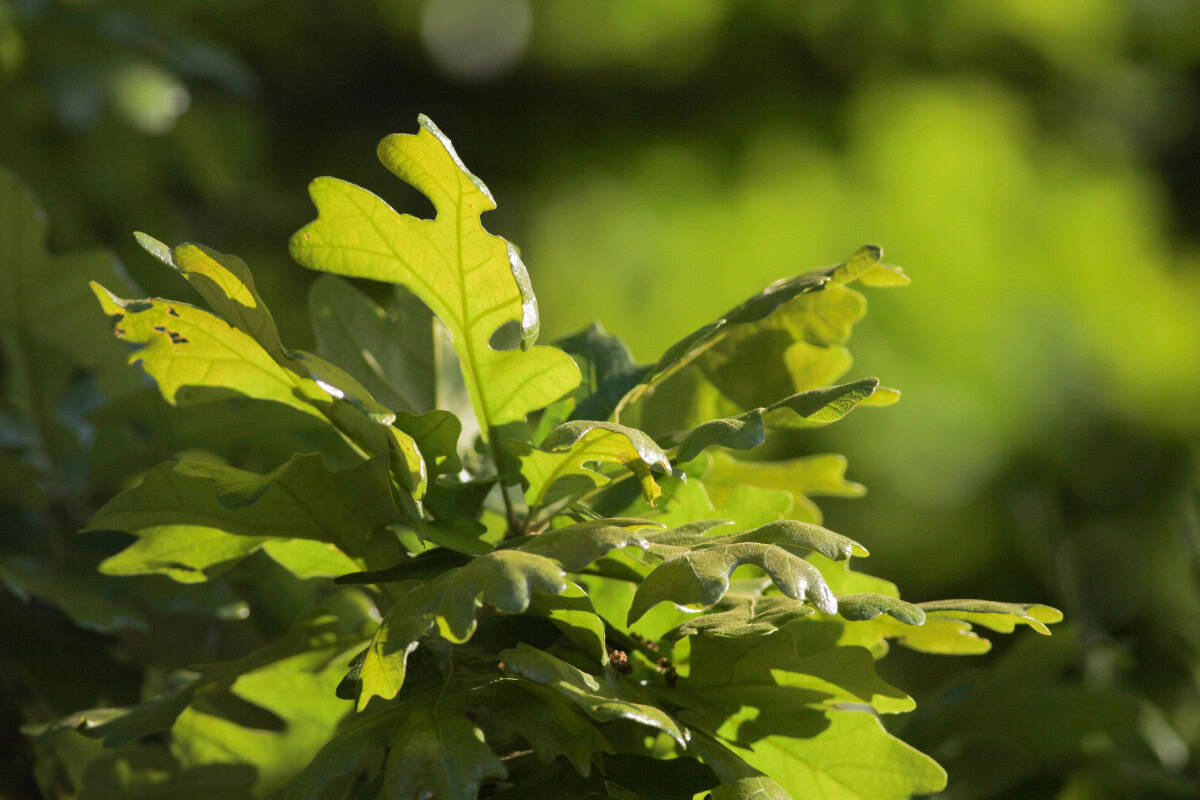
This comprehensive Post Oak firewood profile explores the barbecue king of the South, delivering 22,000-24,000 BTUs per cord with exceptional cooking characteristics and distinctive flavor properties.
Known as the gold standard for authentic Texas BBQ and prized throughout the southern regions, Post Oak offers premium heat output combined with unmatched culinary applications that have made it legendary among pitmasters and outdoor cooking enthusiasts.
- Quick Reference Stats: Post Oak Firewood Profile
- Overview & Identification
- Geographic Distribution
- Burning Characteristics
- Sensory Experience
- Processing & Preparation
- Specialized Uses
- Pros & Cons
- Best Practices & Tips
- Bottom Line: Post Oak Firewood Profile
- 🍖 Post Oak Quick Reference Table 🔥
- Related Resources: Post Oak Firewood Profile
Quick Reference Stats: Post Oak Firewood Profile
- Wood Type: Hardwood (white oak family)
- BTU Rating: 22,000-24,000 BTUs per cord
- Ease of Splitting: Moderate to Difficult (3/5 scale)
- Seasoning Time: 12-18 months
- Smoke Production: Low to Moderate
- Spark/Pop Factor: Very Low
- Scent Profile: Distinctive – Rich, sweet oak aroma with BBQ characteristics
Overview & Identification
The post oak firewood profile stands as the undisputed champion of barbecue woods, offering excellent heat output combined with the distinctive flavor that defines authentic Texas BBQ and southern cooking traditions.
This hardy white oak provides outstanding burning performance with unique smoking characteristics that have made it the preferred choice of pitmasters throughout the South.
The distinctive cross-shaped leaves and deeply furrowed bark make identification straightforward for this culinary treasure.
Common Names: Post Oak, Iron Oak, Cross Oak
Scientific Name: Quercus stellata (family Fagaceae)
Tree Characteristics: Medium deciduous tree reaching 40-60 feet with distinctive cross-shaped or star-shaped leaves and deeply-furrowed bark. Known for drought tolerance and ability to thrive in poor soils throughout southern regions.
Geographic Distribution
Where You’ll Find It: Southeastern and south-central United States from Virginia to Florida, west to eastern Texas and Oklahoma. Most abundant in Texas, Oklahoma, and Arkansas
Availability: Good availability throughout southern regions from land management, fence row clearing, and storm damage
Growing Conditions: Extremely drought tolerant and adapted to poor, sandy soils. Thrives in areas too challenging for other oaks, often found in post oak savannas and sandy uplands.
Burning Characteristics
Heat Output & Performance
- BTU Content: Excellent performance delivering premium heat output among white oak species
- Burn Duration: Burns long and steadily with excellent heat retention throughout burning cycle
- Coaling Properties: Forms outstanding coals that maintain steady heat perfect for extended cooking
- Flame Characteristics: Burns hot with steady flames transitioning to excellent cooking coal beds
Ignition & Fire Management
- Ease of Lighting: Moderate ease of ignition – lights better than dense hardwoods when properly seasoned
- Best Fire Stage: Outstanding primary fuel for cooking applications and excellent for heating
- Burn Rate: Moderate to slow consumption provides excellent heat output and control
- Heat Consistency: Very reliable heat output ideal for temperature control in cooking applications
Sensory Experience
Smoke Profile
- Smoke Volume: Low to moderate smoke production with distinctive BBQ characteristics
- Smoke Color: Clean, appealing smoke with excellent visual characteristics for cooking
- Smoke Flavor: Distinctive mild, sweet flavor that defines authentic Texas BBQ smoking
- Creosote Production: Very low due to clean burning characteristics typical of white oaks
Sound & Visual
- Crackling/Popping: Quiet, steady burning with minimal crackling – excellent for cooking control
- Sparking Tendency: Very low spark production provides excellent safety for cooking applications
- Flame Appearance: Steady, controlled flames perfect for cooking and BBQ applications
Aroma
- Burning Scent: Rich, sweet oak fragrance with distinctive BBQ characteristics
- Pleasant Factor: Widely loved for its association with authentic barbecue and southern cooking
- Intensity: Moderate to strong aromatic presence that defines the BBQ experience
Processing & Preparation
Splitting Characteristics
- Ease of Splitting: Moderate to difficult due to density and occasional twisted grain
- Grain Pattern: Generally straight but can be challenging due to hardness and density
- Tools Needed: Heavy maul or hydraulic splitter recommended for consistent, efficient results
- Best Splitting Conditions: Split when green for easier processing – becomes harder when dry
Seasoning Requirements
- Drying Time: 12-18 months for optimal burning and cooking applications
- Moisture Content: Target 15-20% moisture content for best cooking and heating performance
- Seasoning Tips: Benefits from good splitting and air circulation for even drying
- Storage Considerations: Excellent storage characteristics with natural weather resistance
Processing Notes
- Chainsaw Considerations: Dense, hard wood that requires sharp chains and proper maintenance
- Bark Characteristics: Deeply-furrowed, thick bark characteristic of mature white oaks
- Handling: Dense, heavy wood requiring proper handling techniques and equipment
- Quality Considerations: Seek clean, sound wood for premium cooking applications
Specialized Uses
Barbecue & Smoking Excellence
- Texas BBQ Standard: Gold standard for authentic Texas brisket and traditional southern BBQ
- Flavor Profile: Imparts distinctive mild, sweet flavor that doesn’t overpower meat
- Temperature Control: Excellent heat regulation perfect for long, slow cooking processes
- Professional Use: Preferred choice of competition pitmasters and professional BBQ restaurants
Traditional Cooking Applications
- Southern Heritage: Traditional choice for southern cooking and outdoor food preparation
- Versatile Cooking: Excellent for grilling, smoking, and general outdoor cooking needs
- Long Cooking Sessions: Superior heat retention ideal for all-day smoking and cooking
- Authentic Flavor: Provides the traditional taste expected in regional BBQ styles
Pros & Cons
Advantages
- Legendary status for BBQ and smoking applications
- Excellent BTU output among premium white oak species
- Outstanding flavor profile that defines authentic Texas BBQ
- Superior temperature control and heat retention for cooking
- Burns clean with excellent cooking smoke characteristics
- Very low spark production ideal for cooking safety
- Excellent coaling properties for extended cooking sessions
- Traditional heritage and cultural significance in southern cooking
- Natural weather resistance provides excellent storage characteristics
- Preferred choice of professional pitmasters and BBQ enthusiasts
Disadvantages
- Limited geographic availability – primarily southern regions
- Moderate to difficult splitting requires proper equipment and technique
- Extended seasoning time requires advance planning
- Can command premium pricing due to BBQ reputation and demand
- Heavy, dense wood makes handling physically demanding
- May be challenging to source outside traditional growing regions
- Dense wood requires sharp tools and proper processing techniques
- High demand for cooking may make it expensive for general heating
Best Practices & Tips
BBQ & Smoking Optimization
- Meat Selection: Outstanding for beef brisket, pork ribs, and traditional southern BBQ cuts
- Temperature Management: Learn to bank coals for steady temperature control over long sessions
- Seasoning Quality: Ensure proper seasoning for clean smoke and optimal flavor development
- Mixing Strategy: Can be combined with fruit woods for complex flavor profiles
Processing for Cooking Applications
- Size Consistency: Split to consistent sizes for predictable burning and temperature control
- Quality Selection: Choose cleanest, soundest pieces for premium cooking applications
- Storage Protection: Protect seasoned cooking wood from moisture and contamination
- Advance Planning: Process and season well in advance of cooking season needs
Regional Sourcing
- Authentic Sources: Seek suppliers in traditional Post Oak regions for best quality
- Sustainable Harvesting: Support sustainable land management and responsible harvesting
- Quality Assessment: Learn to identify properly seasoned Post Oak by appearance and aroma
- Seasonal Availability: Understand regional availability patterns and plan accordingly
Bottom Line: Post Oak Firewood Profile
Post Oak represents the pinnacle of cooking woods, offering the authentic flavor and burning characteristics that define traditional Texas BBQ and southern cooking excellence.
While demanding proper processing and commanding premium pricing, the legendary flavor profile and superior cooking performance make it invaluable for serious BBQ enthusiasts and anyone seeking authentic southern cooking experiences.
Best For: BBQ and smoking applications, southern region users, authentic cooking experiences, professional pitmasters, and those who appreciate traditional cooking woods
Skip If: You’re outside southern regions, don’t cook outdoors regularly, need easily processed wood, or prioritize heating over cooking applications
For a complete overview of Post Oak’s legendary BBQ characteristics and premium cooking specifications, reference this detailed comparison table to evaluate how this Texas BBQ gold standard meets your specific smoking and cooking needs.
🍖 Post Oak Quick Reference Table 🔥
Post Oak reigns as the legendary BBQ and cooking champion – the Texas BBQ gold standard delivering exceptional 24,000 BTU heat output with outstanding coaling ability and distinctive smoky flavor. This premium Southern treasure transforms ordinary cooking into culinary excellence with superior heat control and authentic BBQ character. The ultimate choice for serious pitmasters and cooking enthusiasts! 🏆🥩
| Characteristic | Rating/Value | Notes |
|---|---|---|
| 🔥 BTU per Cord | 22,000-24,000 | Excellent heat output |
| ⚖️ Density | High | Substantial cooking weight |
| ⏰ Seasoning Time | 12-18 months | Moderate drying period |
| 🪓 Splitting Difficulty | Moderate-Difficult (3/5) 🪓 | Requires proper equipment |
| 💨 Smoke Production | Low-Moderate | Excellent cooking smoke |
| ✨ Spark/Pop Factor | Very Low | Perfect cooking safety |
| 🚀 Ignition Ease | Moderate 🔥 | Good when properly seasoned |
| ⚡ Burn Rate | Moderate-Slow | Excellent heat control |
| 🔥 Coaling Ability | Outstanding | Superior cooking coals |
| 🌸 Scent Quality | Distinctive 🍃 | Classic BBQ aroma |
| 🍳 Cooking Suitability | Legendary | Texas BBQ gold standard |
| 🌱 Sustainability | Good 🌿 | Land management, clearing |
| 📍 Regional Availability | Southern US | Concentrated distribution |
| 💰 Cost Level | Premium 💎 | BBQ reputation pricing |
| 🎯 Best Use | BBQ smoking, authentic cooking | Culinary excellence |
| 🏆 Overall Rating | BBQ and cooking legend |
Related Resources: Post Oak Firewood Profile
Last updated: 7/29/2025


